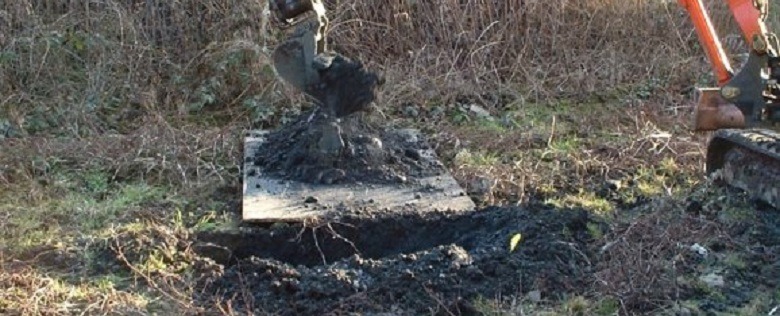The answers can be found in the data. Often the volume of contaminated material is calculated by drawing an imaginary line equidistant between a point of known contamination, and a point of known clean soil, and doing this on each side of the contaminated area. This is a good approach and isn’t far off ‘best practice’, but that doesn’t mean it’s been carried out efficiently.
As you can imagine, the room for error in the above method is potentially huge in both directions, you could end up leaving contaminated soils in the ground (requiring further works when validation sampling fails), or removing volumes of clean materials unnecessarily. This can all be amplified by poor’ site investigations which are often the cheapest because they involve the minimum number of investigation points.
It’s worth noting that these lines in the soil can be between hazardous soils and non-hazardous soils, both of which will be disposed of, but at different costs and potentially to different locations.
At last, the 3 ways to reduce volumes-
1- Further Investigation – if you’re pricing your project by using imaginary depth and areal lines and this leaves a significant unknown volume, have a targeted investigation carried out. The costs are generally lower than the original investigation because you know which contaminants / soil strata you’re looking for. We have recommended and carried out further investigations before, on one site we reduced the volume for disposal by over 60% making the site development affordable to the client.
2- On-Site Testing – this won’t help your tenders or budgets, unless you like to take a risk, but it will ensure that only contaminated soils are removed from site. Many different pieces of kit will allow you analyse soils on site, try an XRF, PID, FID, etc… each has their place. With regular testing of soils along excavation boundaries during works, the volume for disposal can be defined, this will either reduce the volume for disposal, or at the very least avoid surprises in validation sampling which can result in re-visits to site to further an excavation.
3- Soil Management – It is allowable in certain situations to re-use ‘contaminated’ soils on site (see this blog for more details). E.g. when you’re considering the development of the site, a soil which has been identified as a risk to future users if developed as a residential garden, could be used beneath roads, assuming it is suitable, necessary, and of course safe, for the new use. As such you can re-use on site.
Soil treatment is another option for retaining soils on site, more information can be found here.
2021
Soil remediation guide
Approaching soil remediation without any prior knowledge can be difficult and uncomfortable at times, especially when it can potentially be very costly. This free eBook will help you understand the whats, the whys and the hows of soil remediation in the simplest terms.



